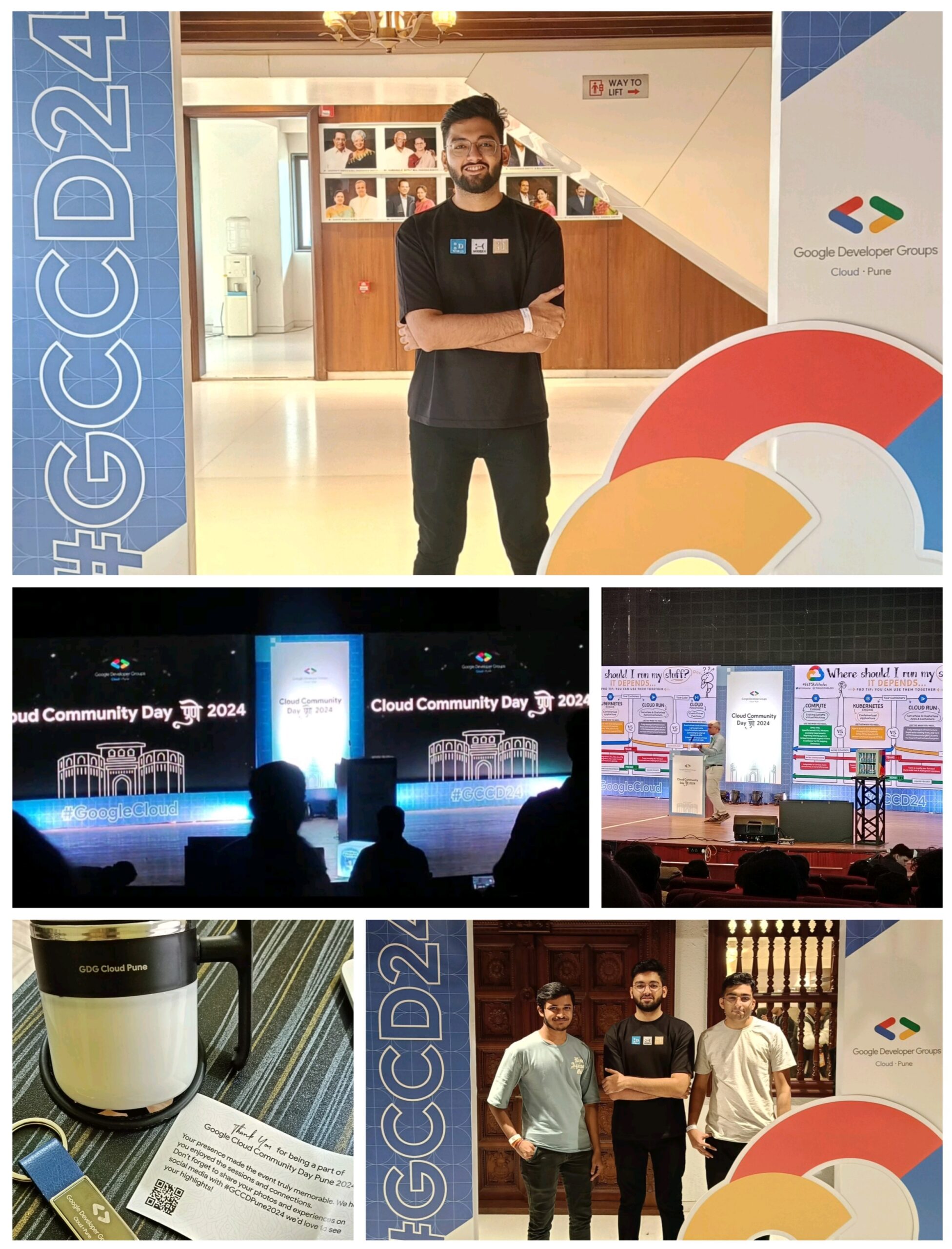- By - Gaurav Masand
- Posted on
- Posted in AI, Event, Google, technology, Uncategorized
GDG Cloud Pune 2k24
I had an amazing time at the GDG Pune event! Right from the start, the management was incredibly impressive, ensuring everything ran smoothly. We kicked off the day with a delicious breakfast, fueling up for a day of insightful sessions. After hearing from eight inspiring speakers.
- Vijaykumar Jangamashetti really stood out with his presentation on Google Cloud GenAI. His smooth delivery and interactive style were captivating, making it easy to absorb the information.
- Arun Teja Godavarthi’s live demo of creating a Flutter project in IDX in just 30 seconds was mind-blowing! Seeing the power of IDX in action was truly impressive. The lineup of speakers was top-notch, each sharing valuable insights on the latest advancements in AI and cloud technologies.
- Murari Ramuka’s talk on Google’s new Notebook LM was particularly fascinating, especially since it was launched just a few weeks ago! He explained how this personalized AI research assistant, powered by Google’s most capable model, Gemini 1.5 Pro, is revolutionizing research.
- Yogesh Kulkarni provided valuable insights into the current demands of clients in the AI landscape. He highlighted the growing need for personalized AI and discussed two prominent industry approaches: RAG (Retrieval Augmented Generation) and SFT (Supervised Fine-Tuning). He explained how RAG leverages user information and context to enhance prompts, while SFT focuses on fine-tuning models for specific tasks, emphasizing the distinction between the two.
- Vaibhav Malpani then took the discussion on RAG to a deeper technical level, exploring its backend workings and intricacies.
- Bhavesh Bhatt’s session on Graph databases was an eye-opener. He introduced us to the concept using Google’s research paper “Attention is All You Need” and explained how Neo4J, a popular Graph DB, works. He also introduced us to Gradio, an LLM library.
- Sakshi Khandelwal gave us a comprehensive overview of serverless technologies in Google Cloud, highlighting the use cases, benefits, and the prominent role of Java in this space.
- Shree Bhagwat provided practical guidance on seamlessly integrating LLMs into mobile apps using Firebase and GenKit.
- Nirav Bhagwat’s presentation was a highlight for me. His structured approach, clear categorization of points, and engaging teaching style were phenomenal. He thoroughly explained the differences between data warehouses and traditional databases, emphasizing the benefits of data-driven decision-making. He meticulously covered key aspects, like the challenges of traditional databases and how data warehouses overcome them, the differences between BigQuery and traditional RDBMS, BigQuery storage advantages, partitioning vs. clustering, data security through encryption and dual-key systems, role-based access control, and the integration of embedded ML algorithms within BigQuery.
- Anubhav Singh’s delivered an interesting talk on Goroutines as Cognitive Threads and how they can replicate human behavior in Go programming, leading to more intelligent systems.
- Suddhasatwa Bhaumik shared his experience developing the MovieNETs model, which uses CNN to generate videos from images. His anecdote about testing the model on volleyball match images, which resulted in an astounding 84% accuracy, was truly captivating.
- Prerit Munjal provided invaluable advice for new entrepreneurs by sharing his own experiences. He discussed the challenges he faced, including a security incident where his Google Cloud infrastructure was compromised, offering practical lessons learned along the way.
- Ashok Vishwakarma’s session was another favorite. He had a knack for explaining complex technical concepts with relatable real-world examples. For instance, he explained why you can’t view orders older than a year on the same Amazon page and why Google uses accounts.google.com instead of google.com/accounts – all with clear technical reasoning. His presentation style made learning enjoyable and effortless. He taught us about multi-tenancy, where companies separate their infrastructure components like databases, accounts, and servers, often dividing them regionally. He even explained the connection flow in such a network, showing how different components interact.
- Ashutosh Bhakare’s discussed AI topics and Google Cloud technologies, indicating a focus on cloud-based AI solutions, which often utilize GKE.
- Ashita Prasad did a fantastic job of breaking down the differences between LLMs and AI agents, illustrating how these technologies work together seamlessly within Google Cloud’s Vertex AI platform. Her live demonstration of Vertex AI Agent’s capabilities, particularly how to create a program manager agent with specific goals based on instructions, was very insightful.
- Sathish VJ introduced us to the powerful capabilities of gencmd.com, a tool that integrates Generative AI into the command line to provide contextually relevant suggestions. He also encouraged us to explore AI Studio tools from Google.
- Haripriya Sachdeva gave a fantastic overview of Looker, a business intelligence platform that empowers businesses to make data-driven decisions. She explained how Looker helps access, analyze, and visualize data effectively. She also spoke about data mining, emphasizing the importance of gleaning insights from data through cleaning, manipulation, and the creation of new dependent parameters.
- Aryan Irani’s energy was contagious! Even though his talk was scheduled towards the end of the day, his enthusiasm was infectious, and he had everyone’s full attention. He provided a hands-on demonstration of Vertex AI Agent Builder, a powerful tool for developers, showcasing its capabilities on stage.
To top it all off, the event concluded with some awesome goodies! Overall, it was an incredibly enriching and enjoyable experience, and I’m so glad I had the opportunity to attend. A huge thank you to GDG Pune for organizing such a fantastic event!


